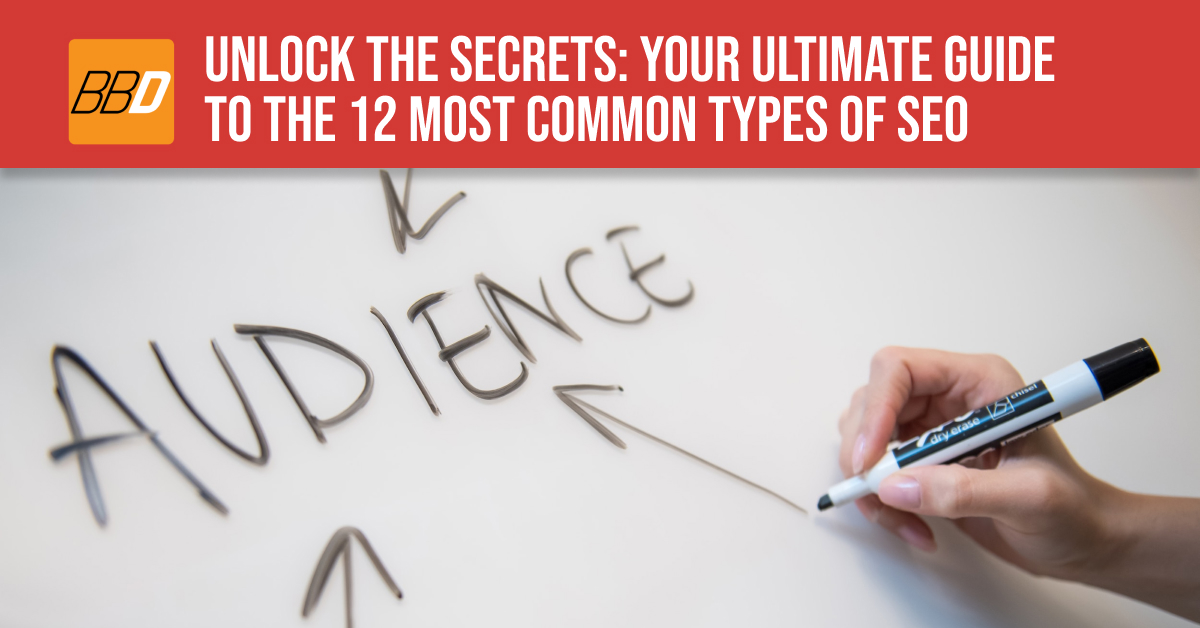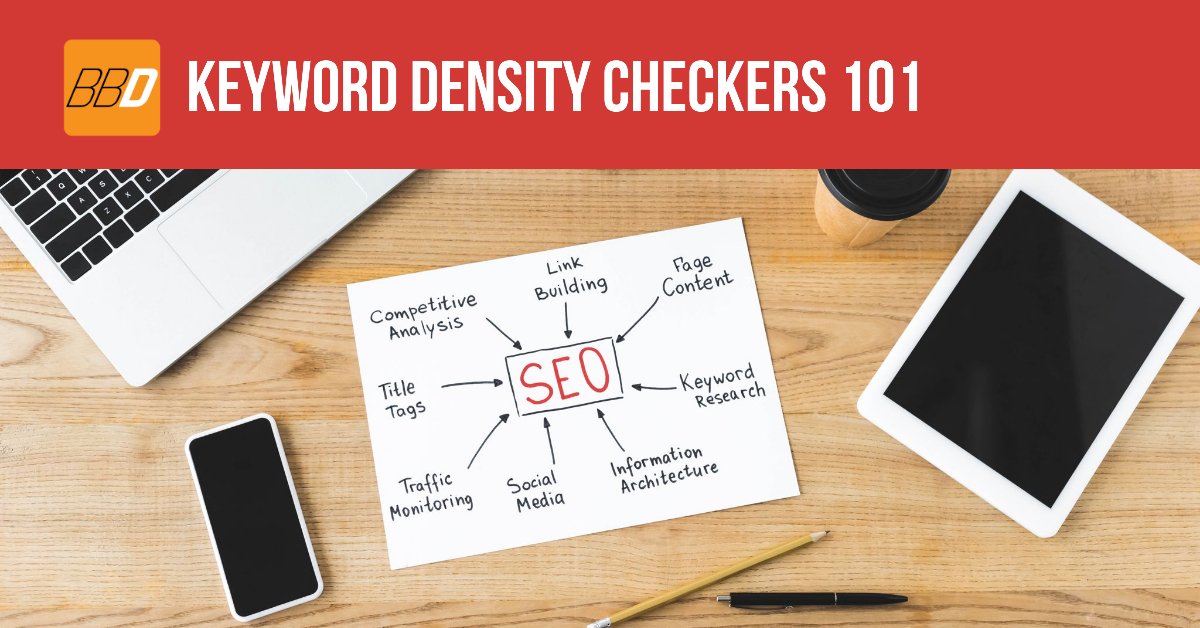If you want your website to be successful, it’s important to understand the different types of SEO available. SEO stands for Search Engine Optimization and is a digital marketing strategy used by businesses to increase their visibility on search engines like Google, Yahoo and Bing.
When people are searching for content that’s related to what you have to offer, it’s crucial that they find you at the top of the search results page so they can click through and learn more about what you do. It can be overwhelming trying to sort through all of the options out there but don’t worry! In this guide we’ll break down each type of SEO so that you can make informed decisions when it comes time define your digital marketing strategies.
From technical audits and keyword research, link building strategies and local business listing optimization – we’ve got everything covered in this comprehensive guide!
The 12 Common Types of SEO
Search Engine Optimization, or SEO, is an important element of any website or online business. It refers to the tactics used to boost a website’s ranking in search engine results pages (SERPs). To understand why SEO is important and how it works, let’s look at the different types of SEO.
These include White-Hat SEO, Black-Hat SEO, Gray-Hat SEO, On-Page SEO (On-Site SEO), Off-Page SEO (Off-Site SEO), Technical SEO, International SEO, Local SEO, Ecommerce SEO; Content SEO; Mobile SEO; and Negative SEO.
White Hat techniques are those that follow Google’s guidelines for optimizing websites and content in order to get higher rankings for relevant search terms and improve overall user experience. This includes activities such as keyword research & optimization of content with keywords & phrases related to your target audience; internal linking for better discoverability of webpages; metadata optimization & structured data markup to make sure each page is properly indexed by search engines; image optimization including ALT tags etc., as well as URL structure optimization so that users can easily find what they need without having any “404 Not Found” errors.
Black Hat techniques are those which are considered unethical practices by search engines and involve manipulating algorithms through spammy tactics like hidden links & malicious code injections in order to get quick results without considering the user experience or brand reputation. Black Hat techniques should be avoided at all costs since penalties imposed by Google can be severe!
Gray Hat strategies combine both White and Black hat tactics but do not necessarily fall into either category – these strategies have their pros & cons just like anything else so it’s best practice to carefully consider whether implementing one would be beneficial for your business in the long run before attempting it out!
1. White-Hat SEO
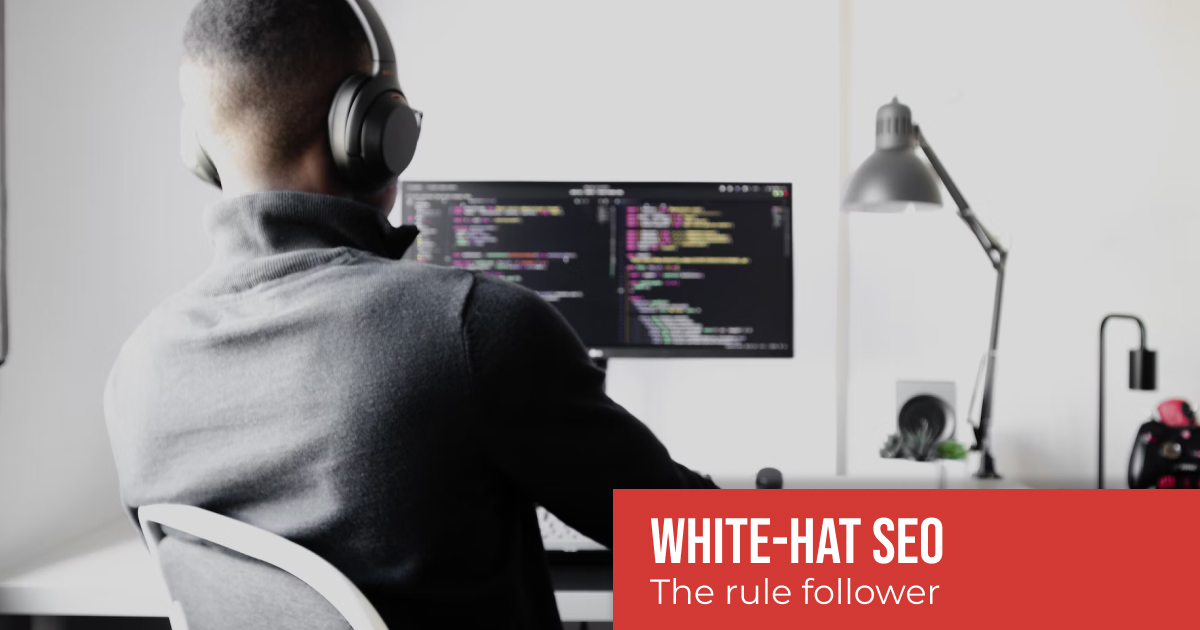
White-hat SEO, also known as ethical SEO, is the practice of optimizing content that follows best practices and aligns with Google’s Search Quality Rating Guidelines. It refers to a set of tactics used to help websites of any size or type achieve higher organic search engine rankings in a safe and sustainable manner. This includes using keywords strategically, creating high quality content, building internal links, focusing on user experience (UX) optimization for better navigation and usability, increasing website speed, and improving your backlink profile through guest blogging or organic link building.
White-hat SEO focuses on providing value to users by creating helpful information that answers their queries quickly without sacrificing the importance of high-quality content. This ensures that people visiting your pages find what they are looking for in an easy way while staying longer on your website – which can lead to increased customer engagement, more repeat visitors and ultimately more business leads. When done right and following all guidelines provided by Google algorithms, white hat techniques can provide long term results and a great return on investment compared to other strategies like black hat SEO or paid advertising.
2. Black-Hat SEO

Black-hat SEO can be defined as any kind of optimization tactics that are used to manipulate search engine rankings and are considered unethical by Google. It involves using tactics such as keyword stuffing, link farming, cloaking, content spinning and more which don’t comply with Google’s webmaster guidelines.
These techniques can potentially help a website get higher rankings in the short term; however, in the long run it could lead to penalties from Google or other search engines due to their algorithms catching on to the manipulation attempts. Ultimately, this would lead to reduced visibility online and a decrease in organic traffic for the website.
Some examples of black-hat SEO include creating multiple doorway pages with thin content which is designed solely for ranking extremely well in particular searches; creating content which is stuffed full of keywords but doesn’t provide much value; scraping content from other websites and presenting it as your own; buying backlinks from link farms; cloaking or redirecting visitors depending on their browser type or IP address; hidden links or text placed within a page’s code structure but not visible through normal viewing etc.
It’s important to note that some companies have seen success with these kinds of practices when done correctly without being caught by search engines – but this does come at a risk. It’s always better (and recommended) for businesses to focus on white-hat SEO methods instead!
3. Gray-Hat SEO

Gray-Hat SEO is the practice of using certain tactics which might not be explicitly defined as approved by search engine guidelines, but still recognized by search engines. These tactics are known to produce good results, without being too risky.
Gray-Hat SEO includes a variety of techniques like using keyword stuffing in content or link building with low quality websites. As such, Gray-Hat SEO can best be described as a blend between White-Hat and Black-Hat SEO; it employs methods that are neither fully compliant nor fully disallowed by search engine algorithms.
Using Gray-Hat SEO requires careful consideration and research; you should understand the risks associated with these practices and make sure to use them sparingly, only when deemed necessary for improving your website’s visibility. This could mean understanding the competition, researching related topics and keywords, investing in quality content creation or designing user friendly websites – all while keeping an eye on industry standards as they evolve over time.
4. On-Page SEO (On-Site SEO):

What is On-Page SEO (On-Site SEO)? It refers to optimizing individual web pages to rank higher and earn more relevant traffic in search engines. It includes aspects like keyword research, quality content creation, internal linking for SEO, metadata optimization and image optimization.
With the right keyword research, you can optimize your website to target specific search terms that are most relevant and important to your business. Quality SEO content means creating high-quality pieces of content that answer user queries with an authoritative tone and deliver useful information in a natural way – as if you’re talking directly to your readers or users. Internal linking helps search engine crawlers understand how all the different pages of your website link together, it increases dwell time for visitors on your site which boosts engagement signals for Google’s algorithm, improving rankings over time. Metadata plays a very important role when it comes to on-page optimization; title tag and meta description should include the focus keywords you want Google bots to pick up from those pages so they appear in related searches results. Image optimization is another aspect of on-page SEO that shouldn’t be overlooked: adding ALT tags with descriptive words related specifically to the image allows users browsing without visuals access information about images included in page’s contents; this also tells Google bots what types of elements are included in each page. To ensure proper organic visibility it’s essential that websites implement good on-site practices like these mentioned above – they play an important role when it comes down to getting better rankings while improving user experience at the same time!
SEO Keyword Research
SEO keyword research is one of the most important aspects of any successful search engine optimization strategy. It involves finding valuable, relevant words and phrases that people use when searching for information related to your business, products, services, or website. Knowing these keywords helps you create content that’s more focused on improving your organic traffic and ranking on the search engine results pages (SERPs).
When creating an SEO keyword list, consider including terms related to industry trends and topics specific to the target audience. This can help you reach potential customers who are actively looking for information about a certain product or service. Additionally, it helps you better understand what kind of content will be useful for readers so they’re more likely to stick around and interact with it.
It also pays off to conduct a thorough analysis of your competitors’ websites – as this will give you some insight into which keywords they focus on in their content marketing strategies. You can then build on this research by testing different combinations of words or phrases that might have even better potential in driving high-quality organic traffic and boosting visibility online.
Quality SEO Content
Quality SEO content is another very important element of an effective SEO strategy. It’s essential for businesses to understand that creating high-quality, relevant content is key to achieving higher rankings and organic traffic on Google’s search engine results pages (SERPs). Content should be written in a way that it adds value to the users’ experience while being optimized with relevant keywords and phrases.
When creating quality SEO content, there are several different factors to consider. First, you want your content to provide useful information for your readers. Second, it needs to include a good number of related keywords without sounding unnatural or forced. Lastly, your piece should be well structured with a clear title, description, headings and subheadings as well as images or videos when appropriate.
Quality SEO content can help boost organic visibility by providing informative pieces tailored towards user intent and relevance for specific searches. Not only does this lead to better website ranking but also easier recognition from potential customers – helping them find what they’re looking for faster and more easily!
Internal Linking For SEO
Internal links are a fundamental part of SEO. They help search engine crawlers to navigate your website and understand what content is important for users. Internal linking helps Google to categorize information, which in turn can improve your website’s organic ranking on the SERPs.
Internal links also help to boost user experience by allowing visitors to easily find relevant content within your pages and connecting related topics together.
When creating internal links, it’s important that you use descriptive anchor text which accurately describes the destination page while using keywords that people would type into Google when searching for something related. In addition, make sure each link only points to one specified location—you don’t want a single link pointing towards two different pages as this could create confusion amongst search engines and readers alike!
Finally, avoid over-linking or pointing too many internal links at one page as this will dilute its authority with search engines. Keep an eye on how often you’re linking internally and be sure not to include any broken or irrelevant links; bad quality internal links can have a negative impact on SEO rankings!
Metadata SEO Optimization
Metadata SEO optimization is an important step in the SEO process. It refers to adding relevant and descriptive words, titles, and descriptions that can help increase your website’s visibility on search engine result pages (SERPs). This includes making sure you have unique titles and descriptions for each page, as well as including keywords related to your business or services. Additionally, metadata also helps create a better user experience by providing more information about each page so users know what they are clicking on before being directed there.
By optimizing the metadata of your webpages with relevant keywords and phrases, you can make it easier for search engines like Google to understand what your site is about so it will rank higher in their algorithms. Furthermore, having properly optimized meta tags can also help attract potential customers who are searching for specific terms related to what you offer which could lead to more traffic and conversions – resulting in improved organic ranking results over time.
Image SEO Optimization
Image SEO optimization is an important element of any website’s overall search engine optimization. Including images on your website can help improve engagement and attract more visitors, but it’s important to optimize these images for the web so that they are easily accessible by search engines.
Optimizing your images means more than just using the right size – you also need to include relevant keywords in the image file name, ALT tag, and caption to ensure that they are properly indexed. Additionally, try to use descriptive titles and captions whenever possible as this will help boost rankings in Google Images searches which often drive additional organic traffic.
When optimizing your images for SEO, also consider including related keywords in the URL or file name itself – this helps Google understand what content is associated with that image and will result in higher ranking potential. Finally, make sure to use high-quality images that are optimized for web viewing as this will keep readers engaged while also providing them with a better user experience.
URL Structure
One of the most important types of SEO is On-Page SEO, and within that, URL structure plays a critical role in enhancing your website’s visibility on search engines. When creating URLs for your site pages, it’s important to understand that shorter URLs can be easier for users to remember while also making search engine crawlers’ jobs easier.
Including relevant keywords in the URL helps Google and other search engines quickly identify what the page is about and how to classify it. Additionally, having short descriptive URLs makes them appear more attractive in SERPs (Search Engine Result Pages) which will help boost click-through rate of potential visitors or customers. That’s why people often use key phrases as part of their URLs instead of long strings of numbers or special characters.
But that doesn’t mean you should overstuff the URL with too many keywords – focus only on 2 to 4 very relevant/related terms that accurately describe the content and make sure each word looks natural without any extra words added just because they contain a keyword you want to include!
5. Off-Page SEO (Off-Site SEO):

Off-page SEO (also referred to as off-site SEO) refers to the optimization tactics and practices you use beyond your website. It’s about improving the visibility of your website in search engine results pages (SERPs) by building relationships, generating external links, and increasing brand signals.
These strategies include activities such as guest blogging, H.A.R.O., competitor analysis, press distribution, internet ads, and brand signals which help to increase your organic reach and influence with potential customers without getting you penalized by Google or other search engines for using blackhat tactics like paid links or keyword stuffing.
Some of the most important elements to consider when looking at off-page SEO are social media marketing related activities like creating content on youtube videos or images that can then be shared on different social media platforms; backlinks from high quality websites that have relevant content related to yours; reviews from satisfied customers that can be used to create trust in potential new customers; linkbuilding strategies involving internal and external linking which is a key factor for improving organic ranking; as well as understanding algorithms so you can optimize services for better user experience when people visit your webpages.
Guest Blogging
Guest blogging is a powerful SEO tactic that can help in improving search rankings and gaining website traffic. It involves creating high-quality, relevant content for another website or blog with the goal of getting backlinks to your own site.
Guest blogging is an invaluable way to reach out to people outside of your usual audience and increase visibility for both you and the host site. By offering relevant content that readers find valuable, you are able to build relationships as well as expertise within your industry.
Guest blogging can also be used as a way to diversify link building strategies, giving websites more variety in anchor text than if they were only relying on their own internal links. It allows companies to target specific keywords while connecting with potential customers through thoughtfully crafted articles.
By considering factors like niche relevance, authority, topicality, and quality standards when guest blogs are created, businesses can achieve far better organic search results – leading more users directly to their websites!
H.A.R.O
H.A.R.O, or Help A Reporter Out, is a service that connects journalists with sources for their stories and articles. It allows businesses to gain exposure by being featured in publications and media outlets as an expert source on topics related to their industry and services.
For SEO purposes, it’s important for businesses to use this kind of opportunity whenever possible: being mentioned in credible press articles can boost your brand visibility, improve your website rankings and attract more traffic from the search engines.
Using H.A.R.O also gives you the added benefit of building connections with other companies in your field by speaking up about relevant topics related to your industry – all while getting more eyes on you and gaining valuable links!
So if you’re looking to get ahead in SEO without having to invest lots of time into content creation – using HARO is a great way to go! Just make sure you take part regularly so that people become familiar with your company’s name and offerings, increasing the chances that they will reach out when they are looking for a reliable source for their stories or projects down the road!
Competitor Research and Analysis
Competitor research and analysis is an important part of any SEO strategy. It involves researching the websites, services, and content of your competitors in order to gain insights into their tactics and strategies. This allows you to make informed decisions about how to optimize your website for better rankings, traffic, and visibility against them.
By understanding what other businesses are doing well in terms of SEO optimization, you can identify potential weaknesses that you can fill with more targeted strategies. For example, if one competitor has a great video marketing strategy but lacks quality written content on their website, then this could be an area where you could focus your efforts to get ahead.
Knowing what search engine algorithms prioritize will also help inform your SEO practices so that they are as up-to-date as possible when it comes to ranking factors like link building or internal linking structure. Researching competitor sites will also give you valuable information about keywords they use that might be relevant for targeting specific audiences or topics related to yours but not yet covered by other companies in the industry. With these insights at hand, you’ll be able to craft a comprehensive strategy that stands out among the competition!
Internet Ads
Off-Page SEO refers to the techniques and tactics used to increase a website’s ranking in search engine results pages (SERPs) without creating content on the website itself. One of these important off-page SEO techniques is Internet Ads, which involves using online advertisements like Google Ads or Facebook Advertising to help improve visibility.
These ads can be targeted towards potential customers who are already interested in your products and services. This helps you reach a larger audience with relevant ads that will draw more attention to your website and boost its SERP rankings.
Internet advertising also helps improve brand awareness, as it increases the chances of people recognizing your brand when they search for related keywords or products online. It also gives you access to powerful analytics tools which can help you better understand how people interact with your ads, allowing you to further refine them for higher conversion rates.
Overall, using Internet Ads as part of an effective off-page SEO strategy is a great way for businesses both big and small to get more eyes on their websites and ultimately increase their organic traffic.
Press Distribution
A press distribution is an important step in off-page SEO as it involves sending out press releases to help your website gain visibility and increase organic search traffic. This type of activity helps to create brand awareness, establish yourself as a leader in your industry, and announce new services or products.
Press distributions can be great for building relationships between your business and the media outlets associated with it, as well as for increasing online impressions. Press releases should include relevant words, phrases and keywords that are related to the topic at hand so they can be picked up by Google searches more easily.
They should also have quality content that engages readers so they will feel compelled to visit your website. Ensure you write press releases that have a catchy title, interesting description, images/videos when applicable, links back to other pages on the site (internal linking), and contact information provided at the end of the release. These components all contribute towards making sure that readers get all the necessary information about your company right away while also providing them with enough incentive to click through onto other pages on your website; this enhances user experience while also helping you achieve higher rankings on Google SERPs!
Brand Signals
Brand signals are one of the most important elements in SEO. It refers to how users perceive and interact with a company’s online presence. This includes user reviews, social media mentions, and customer feedback.
Brand signals help search engines understand what kind of content is most relevant for a particular keyword or phrase. By including brand signals in your SEO strategy, you can increase your website’s visibility in organic searches, which leads to higher rankings and more potential customers for your business.
When building your brand signals, it’s important to focus on quality over quantity — creating high-quality content that is both interesting and engaging for readers is key when optimizing for brand signals. Additionally, consider including images, videos or even guest articles from influencers as part of your overall strategy; this will make it easier to reach a wider audience and generate more leads for your website.
6. Technical SEO

Technical SEO is an important branch of search engine optimization that works to improve the way a website interacts with search engines and users. It involves optimizing your website’s structure, elements, and code so it can be better understood by both people and algorithms.
It includes activities such as keyword research, site speed optimization, crawl error identification, metadata SEO optimization, URL structure creation and optimization for mobile devices. Optimizing for all these technical factors helps you create a higher-quality experience for users and rank higher in SERPs (search engine result pages), driving more organic traffic to your website.
Technical SEO also often includes creating internal links between different pages on your website so that Google bots can easily navigate through them to index content faster; this not only helps you get crawled quicker but also ensures that important pages are properly indexed by the search engine so they have the best chance at ranking. Additionally, content such as images should be optimized for SEO with relevant keywords in their file names or alt tags which will help them show up more prominently when someone searches for related topics on Google Images or other image search databases.
Site Load Time
Site load time is an important type of technical SEO which involves the speed at which your website loads. This plays a large part in the user experience and can be critical to the success of any online business. Google’s algorithms consider site load time when ranking websites, so it’s essential to ensure that your site loads quickly and effectively.
In addition, visitors are more likely to stay on your page if it takes less than three seconds for them to see content. People don’t have infinite patience, so if you want to keep potential customers engaged – even after they’ve clicked on your page – then you need a fast loading website!
There are tools available such as Google PageSpeed Insights and WebPageTest that will help you determine how long it takes for your website to load and what areas need improvement. Additionally, there are other techniques like caching, compression, minifying code or images that can speed up the process of delivering content from the server to the users’ browsers.
Improving site load time isn’t just about getting better search engine rankings; it also makes sure visitors stick around longer and ultimately maximizes conversions!
Mobile-Friendliness
Mobile-friendliness is the idea that your website should be easy to use and view on any device. In today’s world, it is essential for people to be able access your content on their phones or tablets quickly and easily. Google will also prioritize mobile-friendly sites higher in its search rankings, so this type of SEO is incredibly important.
It involves optimizing both the structure of your site and its content to ensure that it renders properly on different devices and different screen sizes. This includes making sure text can be read easily, images are resized appropriately, links are clickable without issue, etc.
It also involves creating a website experience tailored to mobile users by taking into account factors such as speed (which needs to be high) and designing CTAs that can fit onto small screens while still being effective. Taking these steps will help you reach more potential customers who are using mobile devices to access websites every day – especially those looking for local services or businesses related to yours!
Crawl Error Identification
Crawl error identification is a type of technical SEO that refers to the process of finding and fixing any errors on your website that may be preventing search engine bots from crawling, indexing, and understanding your webpages. It is important for you to identify and resolve crawl errors as they can affect how well your website ranks in SERPs (Search Engine Results Pages) and thus, impact the number of visitors you get.
Crawl error identification looks at elements such as page titles, meta descriptions, page speed, internal linking structure, duplicate content issues, and other factors to ensure all pages on your site are properly optimized for better rankings. This practice also involves looking at broken links so they can be fixed quickly without any disruption in users’ experience. Crawl errors should not be confused with backlink audit which requires identifying bad links pointing to your websites that might have been created by unethical linking practices or black-hat strategies.
It’s essential for businesses to understand this type of SEO if they want their websites to rank higher in searches because it helps increase visibility online which leads to more potential customers visiting their sites – resulting in improved traffic growth over time!
Keyword Cannibalization Audit
Keyword cannibalization is an issue that can impact the visibility of your website in search engine results pages (SERPs). When it happens, multiple pages on your site are competing for the same keyword and this leads to a decrease in rankings.
A keyword cannibalization audit allows you to identify these issues and improve how you optimize your content. It involves researching which keywords are appearing on different webpages within your site. This helps you understand which ones might be causing duplication or overlap with other content topics.
You want to make sure that every page has unique, relevant keywords that align with its specific topic and purpose. The audit can help you identify if certain words are being used too often, so that they can be adjusted or substituted with more effective phrases instead.
It’s important to ensure each page is focused on one primary keyword phrase while also including related terms as well – this way, any potential cannibalization will not affect user experience or search engine rankings negatively!
Duplicate Content Audit
A duplicate content audit refers to the process of identifying and rectifying any occurrences of duplicate content on a website. This type of SEO is important because it helps search engines differentiate between different types of content on your website, which allows them to return more relevant results for users searching online.
Duplicate content can lead to decreased visibility in search engine rankings as well as impairing user experience. It also has a negative impact on other elements such as internal linking structure and keyword optimization efforts. Thus, it’s essential that businesses understand how to identify and eliminate any instances of duplicate content from their websites in order to increase organic ranking potential, drive higher-quality traffic, and improve customer experience.
To do this effectively, you should use tools like Copyscape or Siteliner to scan your website for duplicated pages or sections that could be impacting your SEO performance. Once these have been identified, consider using canonical tags on all the versions of the page so that search engine algorithms can better recognize which one should be featured more prominently in SERPs (search engine result pages). This will help ensure only unique versions are indexed by Google and prevent penalties related to having duplicate content across multiple sources.
Site Structure
Site structure is an important element of technical SEO. It includes the organization of all the pages on a website, including categories and subcategories, so that people and search engine crawlers can easily find what they’re looking for. A well-structured site allows users to quickly access relevant information and helps them to understand what your company offers in terms of services, products or content.
The structure should also include internal links that help create a logical hierarchy between pages as well as improve navigation for users and search engine bots. It’s important to avoid creating keyword cannibalization issues by using canonical tags when you have multiple URLs with similar content; this will make sure the “right” URL is indexed by Google and other search engines.
Using keywords within structured headings and titles will also help optimize your website for higher rankings in SERPs (search engine result pages). By optimizing your site structure with these elements in mind, you can increase visibility online without getting lost in the hustle of traditional SEO strategies such as link building or social media marketing.
7. International SEO

International SEO is an important part of any website’s optimization process, especially for businesses looking to expand into the global market. It requires a specific set of tools and practices that are tailored to connecting international users with relevant information on their websites.
International SEO involves creating content that speaks to people all over the world using keywords, topics, images, videos and other elements in different languages. This helps your website rank higher in local searches and reach potential customers who speak different languages or live in a different country than you do.
It also involves optimizing for multiple countries by making sure each page has its own language-specific title tags and meta descriptions so that search engines can easily identify which countries each page should appear in. Additionally, you will want to focus on internal linking between pages within your domain as well as building backlinks from high-quality websites related to your industry or topic.
Finally, it’s important to understand the guidelines set forth by Google when it comes to international SEO optimization so you don’t fall victim to negative tactics like keyword stuffing and blackhat strategies that can get your site penalized by the search engine algorithms.
8. Local SEO

Local SEO is a powerful tool that can help businesses reach the local customers most relevant to them. It involves optimizing your website, content, and social media accounts for particular locations and keywords related to those locations. For example, if you are a business in New York City, you would want to optimize for keywords like “New York City” or “NYC” so that when people search for services related to your business in those areas, they will be more likely to find your website.
Local SEO also includes creating backlinks with other local businesses and connecting with influencers who live near the area you serve. This helps create visibility among potential customers in the same locality as well as signal Google (and other search engines) that your website is relevant to searches made by users nearby.
Finally, it’s important not just to focus on getting as many leads as possible but also build customer relationships using tactics such as reviews or engaging on forums like Yelp or Reddit where people discuss their experiences with local service providers – this way potential customers who come across such discussions will recognize the name of your company and trust its quality of services even before visiting it!
9. E-commerce SEO
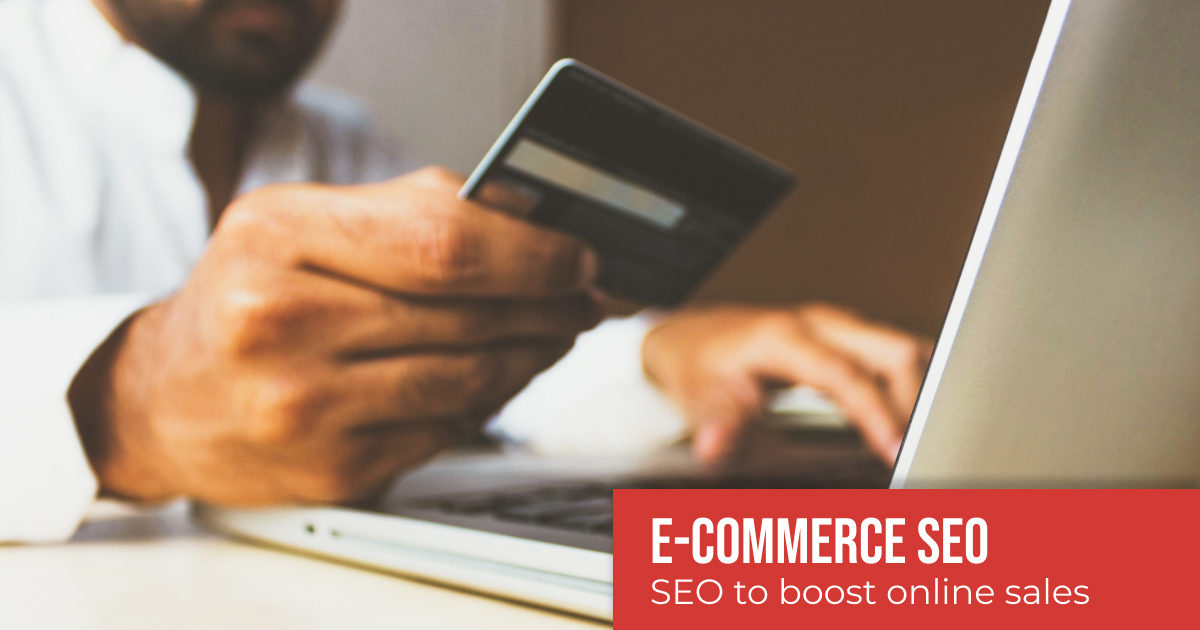
E-commerce SEO is a type of search engine optimization (SEO) focused on optimizing online stores. With the rise of e-commerce, it has become increasingly important for businesses to make sure their websites are visible and accessible to customers. E-commerce SEO involves optimizing website content, images, videos, reviews and other elements on a website in order to improve visibility in the SERPs (search engine results pages).
It includes activities such as keyword research, link building and internal linking structure optimization. E-commerce SEO helps business owners increase organic traffic from relevant searches by making sure their pages are ranked higher on Google and other search engines. It also focuses on improving user experience through optimizing page speed, site structure, metadata tags and descriptions – all essential for getting customers to visit your store. E-commerce SEO can help you get more qualified leads who are interested in what you have to offer so that you can generate more sales!
10. Content SEO

Content SEO is a type of SEO that involves optimizing website content to improve its visibility and reach in search engine results pages (SERPs). It includes creating high-quality articles, blog posts, infographics, images, videos and other types of content to ensure it’s relevant for the target audience.
Content SEO also focuses on using keywords strategically throughout your content in order to get higher rankings in SERPs. This involves understanding what people are searching for when looking for information related to your business, topic or industry. Additionally, you should use keywords naturally throughout the text rather than overstuffing them into every sentence as this can make your writing difficult to read.
Content SEO also requires creating titles and descriptions that grab readers’ attention while including important words that relate to your business or services. You might even consider including video or voice search optimization within your content strategy if you’re looking to reach a wider audience online. And finally, don’t forget about optimizing images with alt-text so they appear when people search using Google Images!
11. Mobile SEO

Mobile SEO is a type of search engine optimization (SEO) that helps ensure that when people are searching on their phones and tablets, they can find the relevant websites and pages they’re looking for.
Mobile SEO techniques can include anything from optimizing page loading speeds to building mobile-friendly websites and making sure content is designed with mobile viewers in mind. It’s important to consider the different devices users might be browsing on, as well as the different screen sizes, when creating content or optimizing a website.
For example, images should be optimized for smaller screens and create an experience tailored to mobile devices – one that’s more convenient and easier for users to view. This includes using descriptive titles, captions, image tags, alt attributes – all of which help crawlers understand what your images are about.
In addition to understanding user experience factors such as speed or font size preferences – also known as “mobile-first indexing” – it’s increasingly important for businesses to pay attention to local SERPs (search engine results pages). Google has shifted its focus toward providing users with more localized information that is easy to access on any device; so if you want your business or website to rank highly in local searches it’s essential that you optimize properly for mobile searchers.
12. Negative SEO
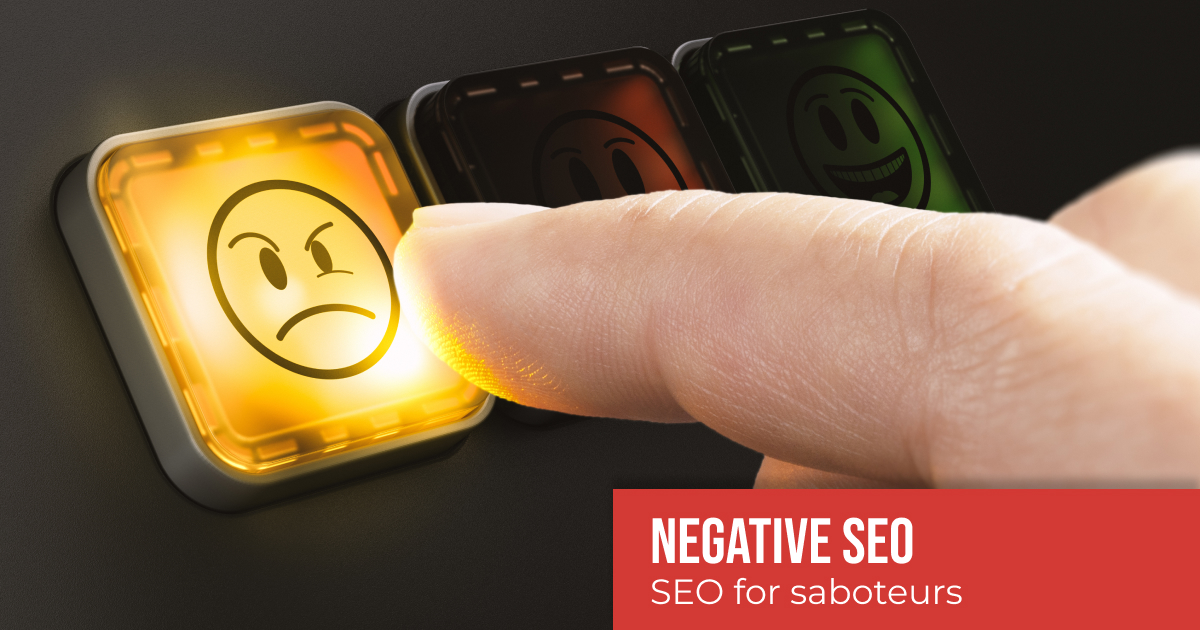
Negative SEO is an unethical SEO technique used to sabotage a website’s search rankings. It involves using black-hat tactics such as creating spammy backlinks, malicious content, and hacking into websites to generate negative results for a business’s online presence. As the name suggests, Negative SEO does the opposite of what SEO does: it decreases visibility instead of increasing it for its target website or webpages.
Negative SEO is often executed by competitors who want to advantage themselves with their own pages ranking higher than theirs in search engine result pages (SERPs). It can also be done by malicious attackers looking to harm a company’s reputation or otherwise exact revenge. In either case, it is important that businesses are aware of this malicious practice so that they can protect their site against these attacks and maintain their organic search rankings.
To counter this tactic, businesses need to have active monitoring tools in place that watch out for any suspicious activity on their websites or other sites related to them. Furthermore, they should make sure their own tactics remain within ethical guidelines set forth by Google and other leading search engines; anything contrary could lead not only to penalties but also potential legal action depending on the gravity of the offense.
Conclusion
SEO is an ever-changing practice that involves a variety of tactics and strategies to optimize websites, content, and pages. It includes a range of different types such as white-hat, black-hat, gray-hat, on page and off page SEO. Each type has its own important aspects that can help businesses better understand how people experience and find their services online.
It’s important to understand the different types of SEO in order to create the right strategy for your business. Developing an optimal strategy requires research into your competitors’ tactics as well as understanding what works for organic searches on popular search engines like Google. Using internal links and keywords relevant to your target audience should be part of any SEO process to ensure higher rankings and visibility across digital platforms like social media or YouTube.
SEO also goes beyond simply optimizing websites; it involves creating high quality content with topics related specifically to keywords used by potential customers in their searches without getting penalized by Google algorithms or other search engine guidelines. This could involve making videos or articles about certain topics that are gaining increasing popularity helping you reach more potential leads while improving customer engagement with the brand they’re considering doing business with.
The best way to improve your company’s ranking is through consistent optimization practices that focus on building high quality backlinks, creating relevant titles and descriptions, focusing on voice search optimization techniques as well as conducting regular audits such as keyword cannibalization audits or duplicate content audits – all leading towards improved user experience which often results in increased scores from Google SERPs (search engine results pages).
Conclusion: There is no one size fits all technique when it comes to SEO; each case must be taken into account separately using several factors combined in order for businesses to have a successful SEO campaign leading towards higher ranking positions generating more traffic without compromising website performance speed or security protocols established by browsers such as Chrome or others popularly used today by users around the world looking for information online.

